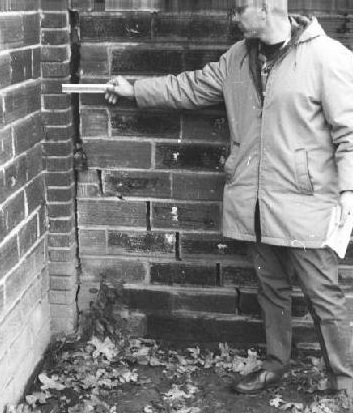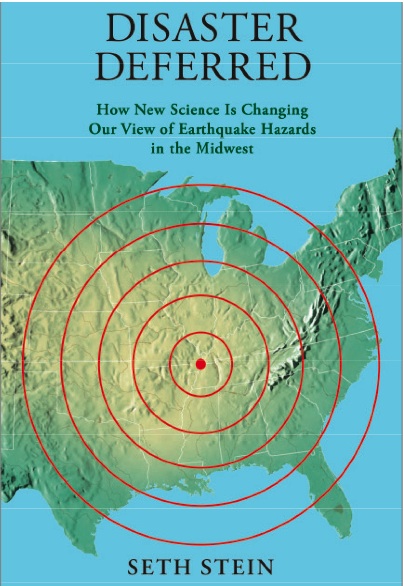We’ve heard this before
Before getting worried, it’s worth remembering that government agencies routinely issue terrifying warnings of disasters that don’t pan out. A few years ago, in 2003, they told us to prepare for biological terrorism by stockpiling duct tape, plastic sheeting, and bottled water. Many people went out and bought these, and a man in Connecticut even wrapped his whole house in plastic.
 |
 |
 |
In 2000, they told us to prepare for the collapse of civilization because of the Y2K computer bug. Before that, in the 1976 “aporkalpse,” the government warned of a 50 percent probability that swine flu would kill a million Americans. Despite critics’ reservations, 40 million people were vaccinated at a cost of millions of dollars before the program was suspended. About 500 people had serious reactions and 25 died, compared to one person who died from swine flu.
Silly disaster predictions like these keep coming, in part because we like being a little scared. We enjoy horror movies, Halloween and roller coasters. Because we know that the predicted disasters are unlikely, we aren’t surprised when they don’t happen.
The danger is small
The shakeout’s goal is to promote the government’s pitch that the Midwest faces the same danger of earthquakes as California, so Midwesterners should take the same precautions. In particular, FEMA wants communities in the Midwest, where major earthquakes are rare, to spend billions of dollars bringing buildings to the same standards of earthquake resistance as California, where major damaging earthquakes are much more common.
The vast majority of U.S. earthquakes and almost all earthquake damage occurs in California and other parts of the west. That’s because earthquakes result from motions of the ground, which are much faster in the west, where the Pacific plate is moving relative to the North American plate along the San Andreas and other faults. The ground in the Midwest moves much more slowly, so large earthquakes are much rarer.
Thus in the past hundred years, California has had a number of large earthquakes that have caused deaths and major damage. In comparison, the largest in the Midwest, a magnitude 5.5 quake in southern Illinois in 1968, caused no fatalities. As the picture shows, only minor damage occurred: fallen bricks from chimneys, broken windows, toppled television aerials, and cracked or fallen brick and plaster. There’s some hazard, but much less than California’s.
 |
FEMA’s claims of impending disaster are being launched to take advantage of the 200th anniversary of the large earthquakes in the winter of 1812 near New Madrid, MO. They have three major weaknesses.
First, they assume the earthquakes 200 years ago were much bigger than recent research shows. Although they often are claimed to have been the largest to strike the “lower 48” states, that’s not true, as shown by the damage they did and didn’t. Log cabins fell in New Madrid itself, but only minor damage occurred in distant communities like St. Louis, Nashville and Louisville. Church bells in Boston didn’t ring, despite a legend repeated in government publications that arose from confusing the Charlestown area of Boston with Charleston, S.C.
Second, the scenario assumes that a similar earthquake is coming within the next few hundred years. This seemed plausible 20 years ago, because geological studies found evidence of ones in about 1450 and 900 AD, so it looked like these happen about every 500 years. Since 1990, the new Global Positioning System, GPS, allows geologists to test that idea by measuring small motions of the ground that occur near faults as energy accumulates that will be released in a future earthquake. To our surprise, the ground at New Madrid isn’t moving or is moving very slowly, so there’s no sign of a big earthquake on the way any time soon. We also have realized that most of the small earthquakes that happen in the area today, which have been used to claim that a big one is coming, probably are aftershocks from the large earthquakes 200 years ago.
Third, the proposed codes specifying how strongly to build buildings use extreme assumptions. Most crucially, they require buildings to be designed for the strongest shaking predicted on average in 2,500 years. Because buildings have a useful life of 50 to 100 years, they are unlikely to experience such rare shaking. That’s why buildings in California or foreign counties are designed to the much less expensive standard of withstanding the shaking expected every 500 years. That’s still much tougher than the criterion used for floods.
The government’s plan has the usual problems with unfunded mandates. Bringing one hospital in Memphis up to California standards would cost about $60 million. Bringing all the buildings in the area up to this standard would take billions of dollars over hundreds of years. Some businesses facing these costs, with little or no benefit, would locate elsewhere or not build new buildings. Communities would lose tax revenue and use resources preparing for earthquakes that could do more good otherwise. Money used putting steel in schools wouldn’t be available to hire teachers, money spent strengthening hospitals couldn’t be used for patient care, and so on.
Surprisingly, this proposal hasn’t been studied to compare its costs and benefits. It’s like an insurance agent promoting an expensive new policy with no idea of its costs or benefits. Simple calculations suggest that the costs are likely to be much greater than the benefits. As a result, midwesterners should think carefully before spending lots of money preparing for unlikely disaster. The best strategy is to enjoy the bicentennial but not take it too seriously.
For more about disaster panics, see

False Alarm: The Truth About the Epidemic of Fear by Mark Siegel
Panicology: Two Statisticians Explain What’s Worth Worrying About (and What’s Not) by Hugh Aldersey-Williams and Simon Briscoe
The Culture of Fear by Barry Glassner
It’s Always the End of the World as We Know It: New York Times column analyzing the Y2K panic by Denis Dutton
The Y2K scare: causes, costs, and cures: scholarly analysis by John Quiggin (pdf)
TV program with Leonard Nimoy predicting doom as Y2K approaches: Download (may not play directly, depending on browser)
A Shot in the Dark: Swine Flu’s Vaccine Lessons: Washington Post article analyzing the 1976 swine flu vaccination debacle by David Brown
1976 advertisements promoting swine flu vaccination (YouTube)
60 Minutes program about 1976 swine flu vaccination campaign (YouTube)

